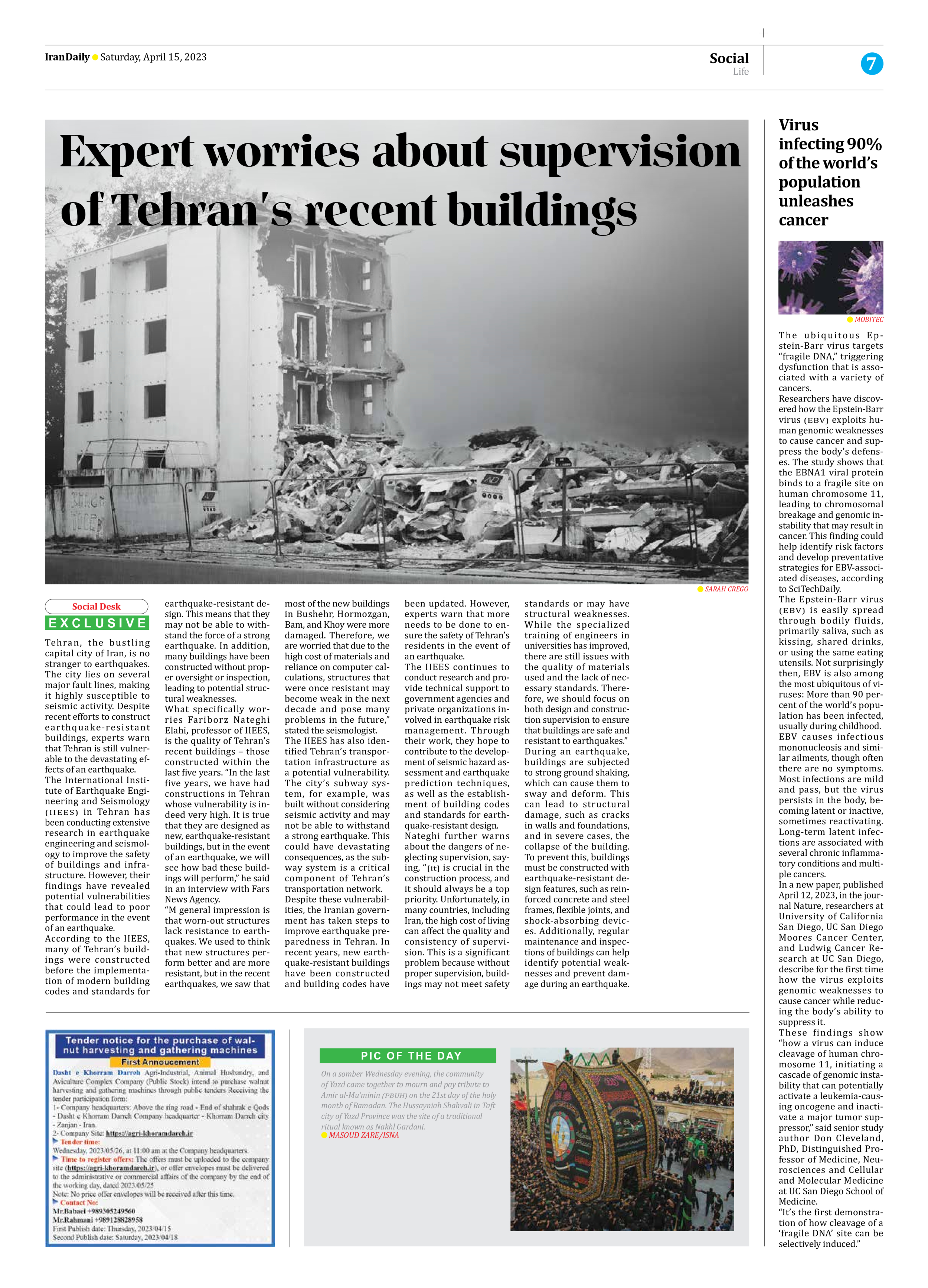
Expert worries about supervision of Tehran’s recent buildings
Tehran, the bustling capital city of Iran, is no stranger to earthquakes. The city lies on several major fault lines, making it highly susceptible to seismic activity. Despite recent efforts to construct earthquake-resistant buildings, experts warn that Tehran is still vulnerable to the devastating effects of an earthquake.
The International Institute of Earthquake Engineering and Seismology (IIEES) in Tehran has been conducting extensive research in earthquake engineering and seismology to improve the safety of buildings and infrastructure. However, their findings have revealed potential vulnerabilities that could lead to poor performance in the event of an earthquake.
According to the IIEES, many of Tehran’s buildings were constructed before the implementation of modern building codes and standards for earthquake-resistant design. This means that they may not be able to withstand the force of a strong earthquake. In addition, many buildings have been constructed without proper oversight or inspection, leading to potential structural weaknesses.
What specifically worries Fariborz Nateghi Elahi, professor of IIEES, is the quality of Tehran’s recent buildings – those constructed within the last five years. “In the last five years, we have had constructions in Tehran whose vulnerability is indeed very high. It is true that they are designed as new, earthquake-resistant buildings, but in the event of an earthquake, we will see how bad these buildings will perform,” he said in an interview with Fars News Agency.
“M general impression is that worn-out structures lack resistance to earthquakes. We used to think that new structures perform better and are more resistant, but in the recent earthquakes, we saw that most of the new buildings in Bushehr, Hormozgan, Bam, and Khoy were more damaged. Therefore, we are worried that due to the high cost of materials and reliance on computer calculations, structures that were once resistant may become weak in the next decade and pose many problems in the future,” stated the seismologist.
The IIEES has also identified Tehran’s transportation infrastructure as a potential vulnerability. The city’s subway system, for example, was built without considering seismic activity and may not be able to withstand a strong earthquake. This could have devastating consequences, as the subway system is a critical component of Tehran’s transportation network.
Despite these vulnerabilities, the Iranian government has taken steps to improve earthquake preparedness in Tehran. In recent years, new earthquake-resistant buildings have been constructed and building codes have been updated. However, experts warn that more needs to be done to ensure the safety of Tehran’s residents in the event of an earthquake.
The IIEES continues to conduct research and provide technical support to government agencies and private organizations involved in earthquake risk management. Through their work, they hope to contribute to the development of seismic hazard assessment and earthquake prediction techniques, as well as the establishment of building codes and standards for earthquake-resistant design.
Nateghi further warns about the dangers of neglecting supervision, saying, “[it] is crucial in the construction process, and it should always be a top priority. Unfortunately, in many countries, including Iran, the high cost of living can affect the quality and consistency of supervision. This is a significant problem because without proper supervision, buildings may not meet safety standards or may have structural weaknesses. While the specialized training of engineers in universities has improved, there are still issues with the quality of materials used and the lack of necessary standards. Therefore, we should focus on both design and construction supervision to ensure that buildings are safe and resistant to earthquakes.”
During an earthquake, buildings are subjected to strong ground shaking, which can cause them to sway and deform. This can lead to structural damage, such as cracks in walls and foundations, and in severe cases, the collapse of the building. To prevent this, buildings must be constructed with earthquake-resistant design features, such as reinforced concrete and steel frames, flexible joints, and shock-absorbing devices. Additionally, regular maintenance and inspections of buildings can help identify potential weaknesses and prevent damage during an earthquake.







